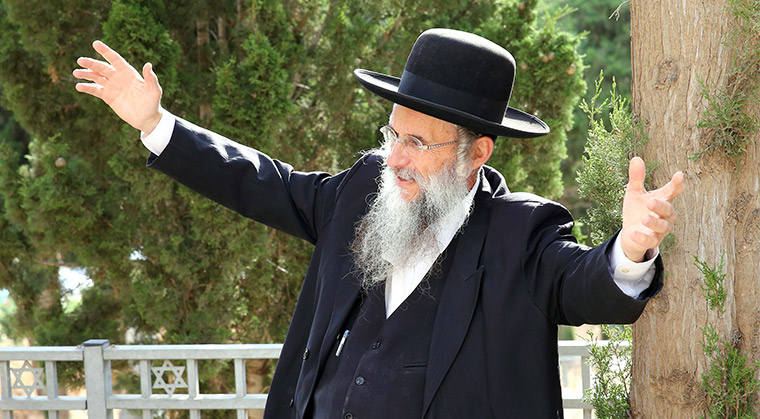The Last Laugh

For three years Reb Kalman Goldschmidt defied the odds, but even as his shloshim approaches, he showed so many others how to shine until the final day

T
he door was open for shivah, and people were walking in off the street.
Just as they’d been for the last three years, coming, going, singing and dancing.
For three years, there had been a battle in this apartment, two opponents staring each other down: Reb Kalman Goldschmidt, and the cancer that racked his body. The soundtrack to that scuffle had been music — songs of spirited tefillah, clarinets, and keyboards, and famous singers, and anonymous singers, and pounding feet.
It started on the 9th of Tammuz, in the summer of 2015, when Reb Klonimus Kalman Goldschmidt received the diagnosis that he was ill. He had weeks to live, the doctors said, a month at most. Even with chemotherapy and radiation treatments they were recommending, they said he wouldn’t make it, so they advised him to use his remaining days to part from his family.
But no one expected him to turn down their offer of treatment. He spoke with doctors and medical askanim before announcing that, much as he appreciated their concern, he would chart a different course to recovery.
He made it clear: This wasn’t a recommended course for others, and he wasn’t undermining the medical system. It was a personal decision —so he changed diets, learned about homeopathy, and got to work on the cornerstone of his recovery.
Faith. Emunah. Real, vibrant, living emunah. And with it, he would fight back.
The Gift
And fight he did. He went to Uman for Rosh Hashanah (he would go several more times). He rejoiced in family simchahs and kept on delivering shiurim. And through it all, he kept laughing.
“My doctor,” he would often say, “doesn’t work in Hadassah. My Doctor created the world! Only He will decide when I have completed my task here.”
During a discussion with the magazine conducted during those first weeks after the diagnosis, Reb Kalman filled the interviewer in on his laughter therapy. With an aching body and legs that protested each step, the patient stood up and walked to the seforim shelf, removing a copy of his own private “medical textbook” — Likutei Moharan. He kissed the sefer and then returned to his place at the table. The entire volume was filled with bookmarks and handwritten annotations. Before reading his own personal prescription for healing, Rav Kalman insisted that the writer must laugh along with him.
In a rather unconventional move, Reb Kalman lifted his large tzitzis and touched the bump visible beneath his shirt. “Look here,” he said, “this is my guest, the ‘gift’ that I received from Heaven. Get to know him. His name is Cancer. He is a shaliach from Hashem to remind me that I’m not going to live forever. Look how beautiful it is,” he added, affectionately stroking the spot. “It is a growth that reminds me that I’m really just a guest in This World and that I will soon be going home — back to my Father in Heaven.”
And he smiled and then started to laugh, and then the interviewer laughed, and Reb Kalman tapped the bulge beneath his shirt and said, “Look, our friend is exploding from laughter.”
Then, once the sounds of laughter filled the room, Reb Kalman began to read: “The scholars of medicine have also determined,” he read, “that illness comes from depression and sadness, and joy is the greatest healing.”
Oops! We could not locate your form.












